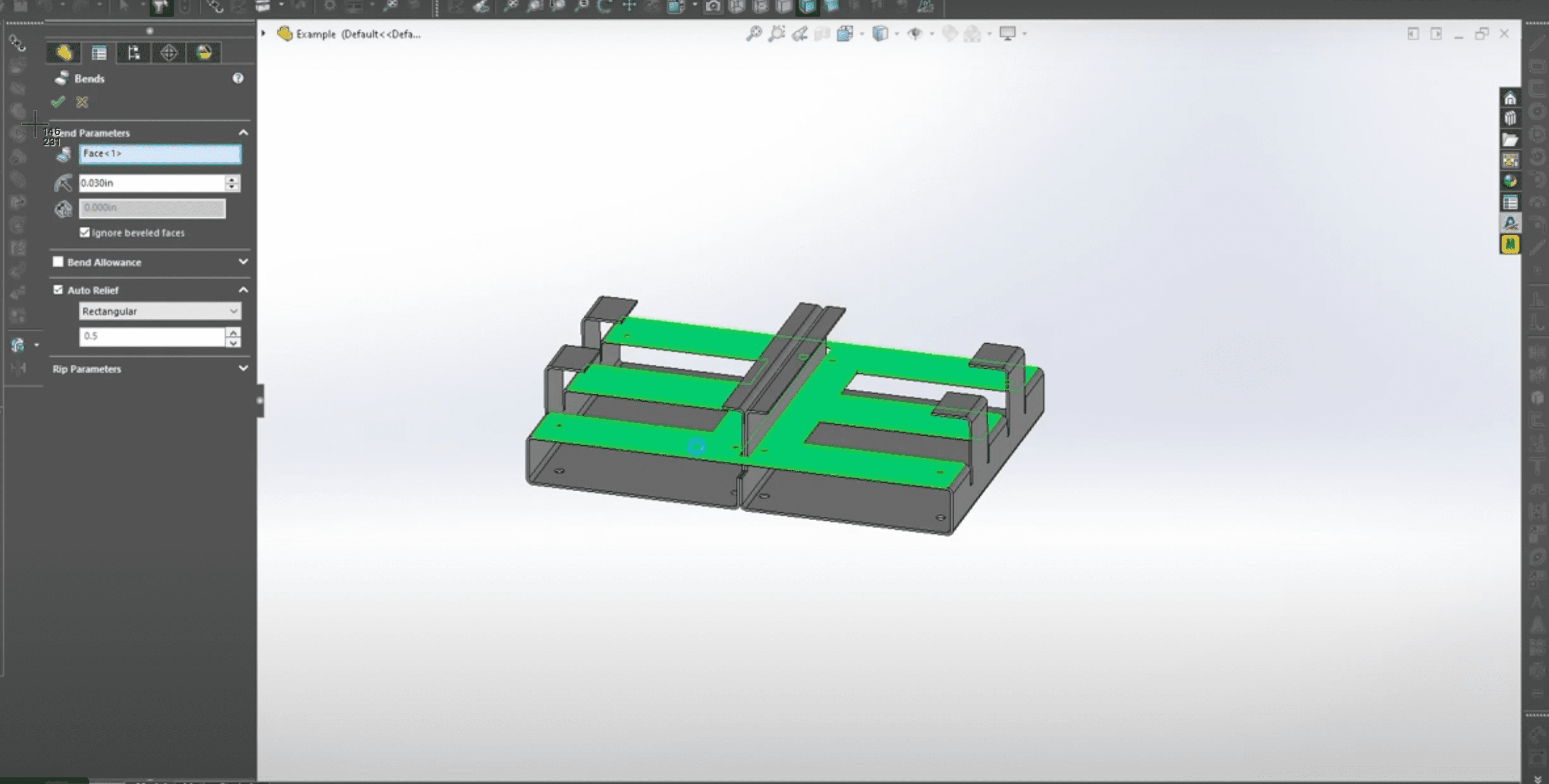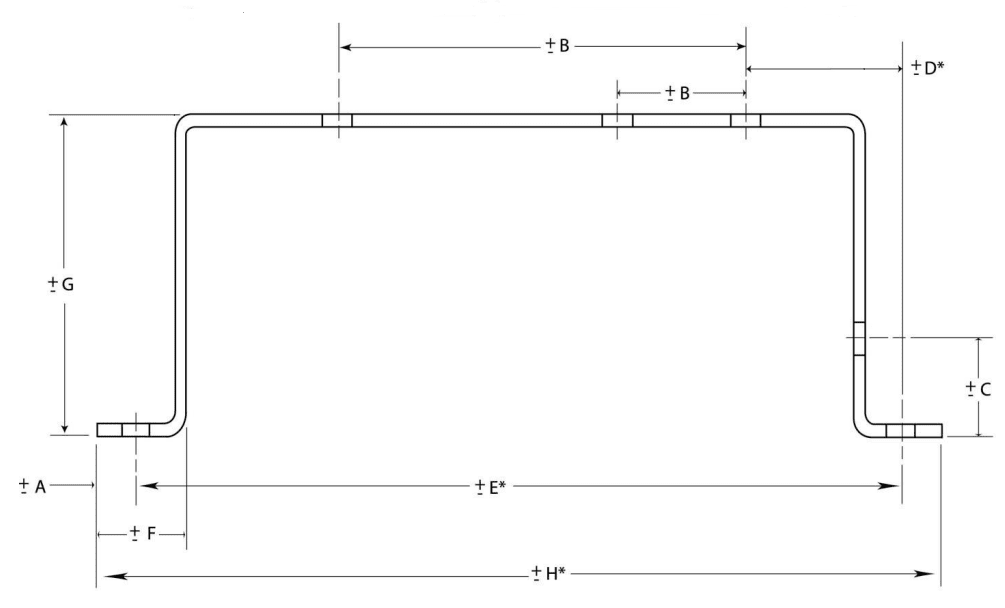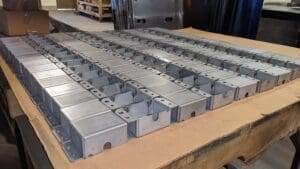Last updated on March 31st, 2025 at 10:15 am
At Approved Sheet Metal (ASM), we're your ally in achieving first-rate results on each and every order.
With design mistakes cropping up in about 50% of customer inquiries, we see a tremendous opportunity to help you get your parts faster and for less money—all with a few simple design changes.
The design problems we encounter most fall into one of these four categories:
Get a quick copy of our Design for Manufacturing eBook, then keep reading to learn why these callouts tend to trip up design engineers. Our insights can make your life (and your job) a whole lot easier.
Table of Contents
- 1 Sheet Metal Tolerances
- 2 Sheet Metal Materials
- 3 Sheet Metal Embossments and Special Features
- 4 Sheet Metal Finishing
- 5 Hole Sizing & Placement in Sheet Metal Design
- 6 Consult with ASM Early and Often
- 7 Recommended Default Sheet Metal Tolerances
- 8 Common Design Mistakes in Sheet Metal Fabrication FAQ
- 8.0.1 What are the primary design challenges that often arise in sheet metal fabrication?
- 8.0.2 How do tight tolerances impact sheet metal fabrication, and what solutions are available?
- 8.0.3 What considerations should be made when selecting materials for sheet metal parts?
- 8.0.4 How can one address design challenges related to unique features like embossments in sheet metal parts?
- 8.0.5 What are some key considerations when selecting finishes for sheet metal parts?
Sheet Metal Tolerances
Many engineers misunderstand sheet metal tolerancing—and for a good reason. Engineering curriculums are often skewed toward CNC machining and 3D printing, leaving engineers with a gap in understanding when it comes to sheet metal fabrication. Tight tolerances such as +/- 0.002" are the norm in machining. But with sheet metal? Not so much.
Sheet metal tolerancing is a different species altogether. For instance, a single bend could have a tolerance of +/- 0.010”; add another bend, and you're looking at +/- 0.020”. With every additional bend, these tolerances continue to stack up, culminating in a serious impact on your final part.
Tolerancing solutions
When tolerance callouts aren’t possible to achieve in sheet metal fabrication, we’ll reach out to discuss options for adjusting your design. (Or, better yet, we encourage you to be proactive about talking to your precision metal fabrication partner!)
Here, a bigger problem arises if you’ve already made the assembly’s machined parts—now, your sheet metal part design can’t be altered. For this reason, we recommend a “sheet metal first” approach to fabrication. Ask your sheet metal fabricator to review your design before sending any mating parts off to be machined.
Lastly, always request your shop’s document(s) depicting standard tolerances. ASM’s Forming Tolerance Sheet is free to download from our website and can serve as your north star for what's actually achievable with sheet metal.
Sheet Metal Materials
Let's say you're designing a spring clip. It needs a certain amount of rigidity, of course, but if the material has too much tensile strength, it will quickly break or crack during the bending process. Watch our video comparing 5052-H32 to 6061-T6, and you’ll see the 6061 aluminum part snap under minimal forces—the result of cracking within the material.
Resources like MatWeb, the so-called "Reddit of design engineering," are popular among engineers, but MatWeb and other forums are loaded with advice and information that isn’t relevant in a sheet metal shop.
You may find recommendations for a hard material that’s perfect for machining but can’t be bent without an unusually large bend radius—an impractical solution for many part designs. You’re also likely to find suggestions for exotic materials that aren’t even available in the USA. (Quick trip to China, anyone?)
Material solutions
Instead of trusting forums that frequently overlook the nuances of sheet metal fabrication, consult with us.
The ASM team can guide you toward materials that are feasible and cost-effective. We can also recommend processes that can transform an unlikely material into the perfect candidate for your project. For instance, softening or annealing certain materials can make them more malleable, and then heat treating them post-fabrication can instill the desired hardness.
When we know what you’re trying to achieve with your end product, we can almost always propose an alternative solution that will keep your costs low and the quality high.
Sheet Metal Embossments and Special Features
We often receive designs with embossments or other unique features that can't be achieved with traditional sheet metal fabrication. Remember, sheet metal can only be stretched so far before it succumbs to stress and cracks.
A shop’s ability to deliver is largely dependent on its tooling, and custom tools can cost you thousands of dollars. Deep draw, stamping, or full forming processes can occasionally resolve these concerns, but these precision metal fabrication processes will drive up your price—and your fabricator may not even offer these specialty solutions.
Embossment solutions
ASM customers benefit from using our tooling library full of downloadable CAD templates for the louvers and embossments we can easily make with our standard in-house tooling. Our tooling library is a powerful resource that’s certain to save you time and money in sheet metal fabrication.

Sheet Metal Finishing
The finish you select for your sheet metal parts can present surprising complications. Custom paints and other specialty finishes can dramatically derail your budget and timeline.
Very recently, a customer specified a name-brand paint that had not only an 8-week lead time but also a jaw-dropping $3,000-per-box price tag! Another recent customer requested “nickel-foil plating” for a copper part—a process unheard of and unavailable at even highly specialized plating houses.
Finishing solutions
In our experience, most “unheard of” finishes come from online archives of old, outdated specifications that modern shops don’t offer or even know about, so don’t rely on odd corners of the internet for finishing solutions.
Instead, stick with standard finishes as much as possible. For powder coating, RAL numbers are your friend, representing standardized powders that are readily available. And when it comes to plating, consult your fabricator for a list of in-house (or vendor-managed) capabilities.
Hole Sizing & Placement in Sheet Metal Design
Proper hole sizing and placement are critical in sheet metal fabrication, affecting both manufacturability and part performance. Engineers often specify hole diameters that require custom tooling or position holes too close to edges or bends, leading to distortion and poor fit. By following best practices, you can ensure clean, precise holes while keeping costs low.
Standard Hole Sizes for Cost-Effective Manufacturing
Many engineers default to arbitrary hole sizes, but using standard tooling diameters reduces setup time and eliminates the need for custom punches or secondary machining. Here are some general guidelines:
- Preferred Hole Sizes: Stick to standard drill sizes (e.g., 0.125”, 0.250”, 0.500”) when possible.
- Laser vs. Punching: If using a punch press, choose hole sizes that match existing punch tooling to avoid additional setup costs.
- Minimum Hole Diameter: A hole should be at least equal to the material thickness (e.g., for 0.060” sheet metal, the smallest hole should be 0.060”).
Hole-to-Edge & Hole-to-Bend Distance
Improper hole placement can cause warping, distortion, or even tearing during fabrication. Follow these minimum guidelines:
- Hole-to-Edge Distance: At least 2x the material thickness to prevent deformation and tearing.
- Hole-to-Bend Distance: At least 3x the material thickness from the bend line to prevent distortion during forming.
- Clustered Holes: Avoid placing multiple small holes close together, as this can weaken the material and complicate cutting.
Avoiding Sharp Internal Corners
If your design includes slots or cutouts, avoid sharp internal corners, as laser cutting will leave heat-affected zones that can cause stress concentrations. Instead, use a minimum 0.010” radius in inside corners for better manufacturability.
Fastener Hole Considerations
If the holes are for self-clinching fasteners (PEM inserts, rivets, etc.), be sure to:
- Follow the manufacturer’s recommended hole tolerances.
- Keep sufficient clearance from bends and edges to ensure proper installation.
- Use CAD libraries from fastener manufacturers (such as PEM®) to ensure accurate hole sizing.
By optimizing hole sizing and placement, you can reduce fabrication costs, improve part quality, and prevent common manufacturing defects. Always consult with your sheet metal fabricator to confirm achievable hole tolerances and placement before finalizing your design.
Consult with ASM Early and Often
Addressing issues with tolerances, special features, materials, and finishes takes time, leading to longer quoting times, extended timelines, and even higher prices.
Your sheet metal fabrication project doesn't have to be a maze of complications. Early dialogue with a precision metal fabrication expert can make the difference between a smooth operation and a logistical nightmare. So, let’s talk—our team is always here to help you finesse your designs, offering you a seamless path from concept to creation.
At Approved Sheet Metal, we're not merely a sheet metal shop; we're your collaborative partner. Together, we can dodge any sheet metal challenge to attain top quality, on-time delivery, and a more-than-fair price.
What can we make for you? Request a quote!





